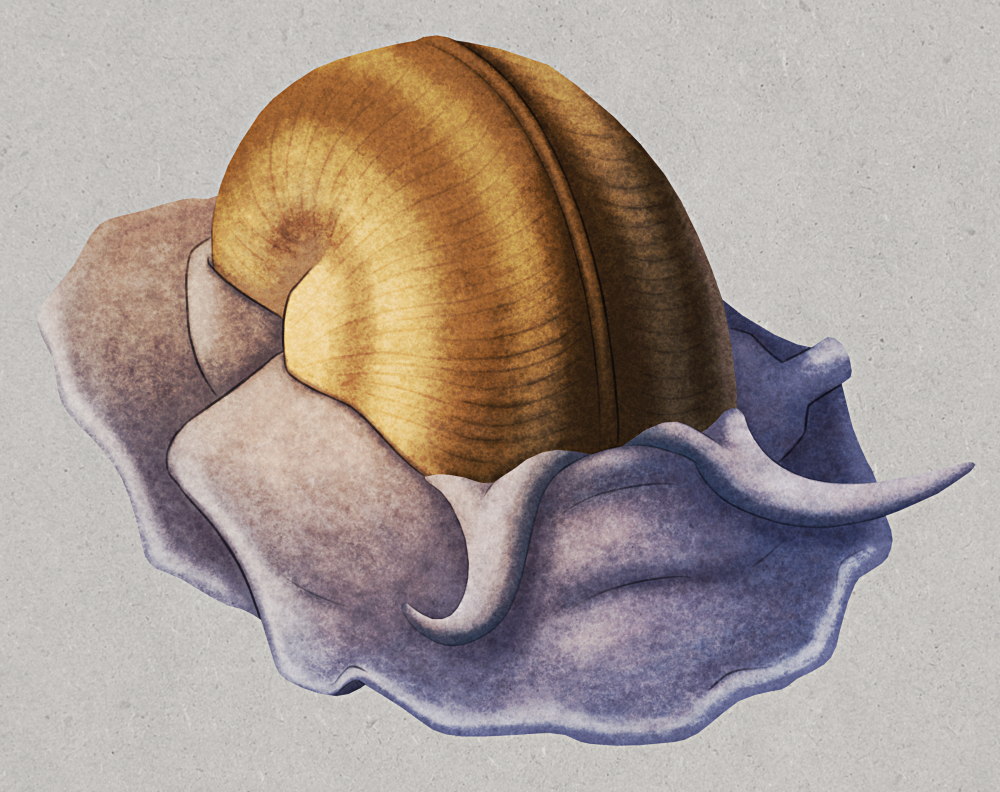Bellerophonts were small snail-like marine molluscs that were either early gastropods or very close relatives of them. They had symmetrically-coiled shells superficially shaped like those of nautiluses, with about half of the shell covered by their mantle similarly to some modern sea snails, and some fossil shells also preserve hints of banded color patterns.
First appearing in the late Cambrian (~500 million years ago), these molluscs existed all the way until the early Triassic, surviving the Great Dying mass extinction (~252 million years ago) only to go extinct just a short time later (~249 million years ago) – a phenomenon known as “dead clade walking”, when a group just barely scrapes through a mass extinction event but doesn’t manage to actually recover afterwards.
The whole group is something of a wastebasket of similar-looking shells, and might actually be more of an “evolutionary grade” made up of various early gastropods and gastropod-relatives than a single defined lineage.
But there’s also another wastebasket nestled inside this wastebasket: the namesake of them all, the genus Bellerophon.

Originally named in 1808, this genus has had a huge number of species assigned to it over the last couple of centuries. This gives a false impression that Bellerophon-like molluscs didn’t change for hundreds of millions of years, and it makes figuring out their actual long-term patterns of evolution and extinction much more difficult.
In the last few decades some mollusc paleontologists have been gradually chipping away at Bellerophon, and multiple new genera have been broken off from it. But even today it remains a very bloated mess – there are still well over a hundred named species spanning about 230 million years of geologic time.
Studies do indicate the whole genus is highly polyphyletic, made up of a tangle of multiple different lineages that all really need to be revised and renamed – but there’s a lot of work still needing to be done to clean up this particular wastebasket.
